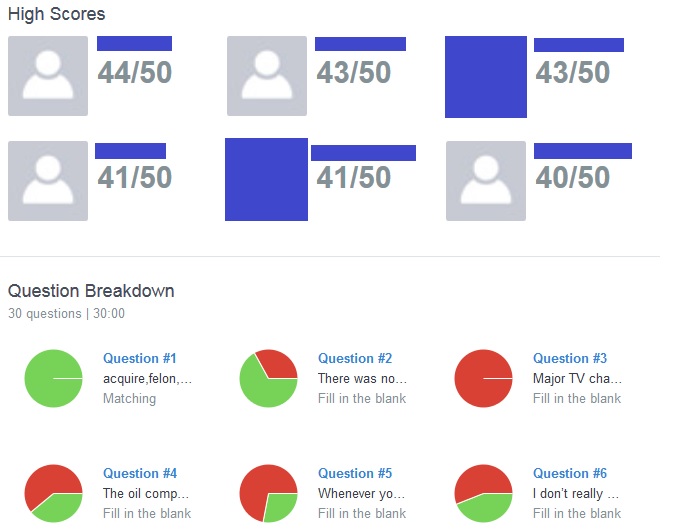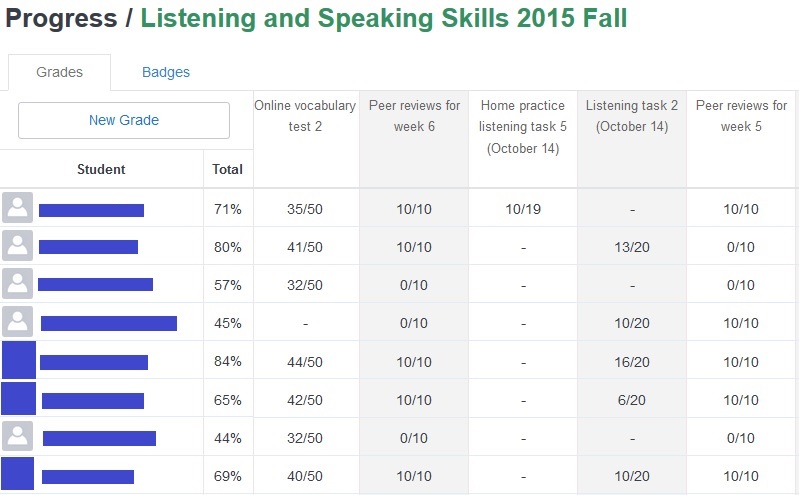May 2016 – Volume 20, Number 1
| Title | Edmodo |
| Developer | Edmodo, Inc. |
| Contact Information | https://www.edmodo.com/contact |
| Type of Product | Web-based social networking learning platform |
| Platform | Web-based online platform
Mobile applications available for iOS (8.0 and later), Android (2.3 and later) and Windows Phone (Windows 8 and later) |
| Price | The website and mobile applications are free to use without limitations. Some third-party applications within the platform offer premium or subscription options after an initial trial period. |
| Help Center | https://support.edmodo.com/hc/en-us |
Introduction
Considering the large number of research articles and how-to papers on the topic, integrating technology into instruction and creating e-learning content seem to be topics of interest to many educators today. However, the sheer number of tools available can be overwhelming, especially when taking into account the additional learning curve of the “digital immigrant” generations (Prensky, 2001). Therefore, it is important to look at the options available to teachers with these points in mind.
Edmodo is a free, online e-learning platform that allows teachers to create and share content with students and to track learning. Edmodo offers accounts for teachers, students, and parents, and its familiar looking interface and relative simplicity make it a strong candidate for teachers looking to take advantage of the learning opportunities afforded by this type of tool.
In addition to its basic functions, users have pointed out that Edmodo is useful as a tool for back-channel communication (Stevens, 2012, p. 5), a blog or wiki (Son, 2011, p. 3), a social learning platform (Dowling, 2011, p. 7), and a microblogging platform (Newgarden, 2009, p. 13; Stevens, 2009, p. 13; Dowling, 2013, p. 2). This illustrates how Edmodo can be understood differently depending on the features the user chooses to focus on. In the present review, Edmodo will be examined as a social network learning platform, and in the following sections, the workings and limitations of the site are addressed.
General Description
Registering for Edmodo is fast and requires submitting only basic information (see Figure 1).
After registering for a teacher account, instructors can create and manage online classes and document student learning. Teachers can invite students to join their classes through a uniquely generated group code to ensure that only appropriate people have access to the course (see Figure 1). Upon registering, students receive a code that their parents can use to see course progress; however, they need to verify their relationship to the student during registration. There is also the option to link the Edmodo account with a Microsoft Office 365 account.


Figure 1. Student and parent account registration process on Edmodo
The basic mission of Edmodo is to provide instructors and learners with a learning management system (LMS) that utilizes the users’ familiarity with social networks like Facebook to help establish a learning community. The similarities with established social networks like Facebook are immediately visible in the familiar blue header and the layout of the main sections (see Figure 2). This is an important feature from a design standpoint as it helps to minimize the learning curve experienced by learners new to e-learning.
Figure 2 shows the teacher interface of Edmodo, which has the most features of the three possible account types (teacher, student, and parent). It can be divided into ten major sections. The left side of the header (1) covers the home, class progress and library menus, the middle (2) is occupied by the search engine of the site, while on the right (7) Spotlight (an option to upload, publish and share materials), notifications and the user profile can be found. On the left of the screen there are options to display a teacher profile (3) and manage groups and communities (4). The middle of the screen is reserved for classwork options (5), including notes, assignments, quizzes, polls, and the ability to send alerts about what should be done. Below, the newsfeed of the communities the user has joined will appear (6), which in this case is illustrated by Language Arts. Finally, on the right side of the screen, one can invite colleagues (8) and contact the help center (9). The last section on the right margin consists of the application store, the application manager and launcher, the calendar in the form of Edmodo Planner, and an option to link Microsoft Office Online with classes (10).

Figure 2. The teacher interface of Edmodo
Features
Edmodo is a versatile learning platform that can be used for a number of learning purposes. One simple possibility is to set up a library of different folders containing files and links for students to access via Edmodo. Both students and teacher can link their libraries with their Google Drive or OneNote accounts. Another commonly used feature of Edmodo is to deliver and collect assignments and quizzes. Assignments and quizzes can be scheduled to appear at a preset time, and relevant files can be added to them. Edmodo also offers the ability to set up polls, which can serve as a tool to discover and discuss students’ positions on issues.
Perhaps the most useful feature of Edmodo is its quiz creation tool (see Figure 3). If the user clicks on the quiz option in the middle of the screen (see point 5 in Figure 2), five possible question types appear to choose from: multiple choice, true or false, fill in the blanks, matching, and short answer.

Figure 3. Quiz creation on Edmodo
With the exception of the short answer option, the quizzes can be automatically graded using answers preset by the teacher. This means that students can get instant feedback on their performance (see Figure 4). The short answer question type allows for more complex items; while this option requires manual correction, it also gives teachers the ability to write comments on the students’ answers and give partial scores as well.

Figure 4. Example of the instantaneous feedback Edmodo provides for gap-filling item types
Quizzes require the teacher to set a time limit and provide a short description. After this, there are three more options available: previewing the quiz to make sure everything appears as it should, the option to randomize questions, and an option to print the quiz for in-class use. By applying multimedia possibilities and linking audio files in the description, it is also possible to create listening tasks within the quiz function. Overall, item creation is quite intuitive and happens through an easily navigable menu. In addition to the results accessible by viewing individual students’ answers, Edmodo also provides a highly useful feature for item validation purposes in the form of pie charts depicting students’ performance (see Figure 5). This information makes it possible for teachers to improve their questions where needed for further implementation.

Figure 5. Sample from Edmodo’s pie chart and score statistics
Keeping track of student performance is a key feature of any LMS. Edmodo creates a progress table for every course (see point 1 on Figure 2) where students’ scores on quizzes and assignments are tracked and an overall percentage score is calculated (see Figure 6). Teachers can see the scores of the class as a whole or of individual students, and the progress gradebook can be exported as an Excel file for further analysis.

Figure 6. A sample from the progress table on the teacher interface on Edmodo
There are several other options for course customization using Edmodo. First, as a possibility for increasing student motivation and engagement, teachers can opt to add badges, which students receive after attaining certain achievements. Edmodo has a number of standard badges that are available in all courses, and it is also possible to create, assign, and share new ones across courses.
Second, a number of applications are available from the site’s app store that enable the delivery of more personalized course content (see point 10 on Figure 2). These are sorted into the different subject areas that are available on Edmodo and, depending on the application are either free, or have a trial period and then a premium (pay) option. Making use of them enables users to overcome some of the limitations of the site.
Limitations
While Edmodo is a very useful tool in many ways, it does have some limitations. If one considers some of the MOOC platforms like Coursera, edX, or Udacity, one limitation is immediately apparent: Edmodo lacks the video lesson feature. Although Edmodo does not claim to compete with those platforms, nor is it aimed at instructing large numbers of students simultaneously, offering such a feature could further the interactiveness of the learning experience, which is perhaps of particular importance to language teachers. Similarly, there is no possibility to stream lessons as can be done using WizIQ. The limited means of interaction on the site also keep Edmodo from being a fully constructivist Web 2.0 tool.
Overall Evaluation
The limitations of Edmodo mean that, depending on the teachers’ aims and the course requirements, the basic site may not be sufficient for some and a possible expansion of features using additional tools or may be necessary. For example, conference sessions can only be held with additional solutions like Skype. However, Edmodo has a number of features that make it a versatile tool for incorporating e-learning strategies into traditional settings, for augmenting face-to-face lessons, and to afford opportunities for collaborative and cooperative learning in small groups.
Conclusion
Edmodo is a highly useful and intuitive LMS that can function as the main platform for many types of e-learning projects. It makes it possible to create courses with a number of features, supporting both face-to-face and online initiatives. The educational possibilities of its features outweigh its limitations, many of which can be mitigated with additional tools or software. The user interface’s similarity with that of Facebook makes it intuitive for students to use without interfering with their private social networking. Various subject areas are supported by active online communities of teachers, which make it possible for educators to network and share experiences. Athough Edmodo may not be perfect for everyone, it is arguably the best free social network learning platform currently available.
References
Dowling, S. (2011). Web-based learning: Moving from learning islands to learning environments. TESL-EJ, 15 (2), 1-27.
Dowling, S. (2013). Using blogs to share learner-generated content. TESL-EJ, 17 (2), 1-22.
Newgarden, K. (2009). Annotated bibliography – Twitter, social networking, and communities of practice. TESL-EJ, 13 (2),1-20.
Prensky, M. (2001). Digital natives, digital immigrants, part 1. On the Horizon, 9 (5), 1-6.
Son, J.-B. (2011). Online tools for language teaching. TESL-EJ, 15 (1), 1-12.
Stevens, V. (2009). Modeling social media in groups, communities, and networks. TESL-EJ, 13 (3), 1-16.
Stevens, V. (2012). Learner-centered do-it-yourself learning management systems. TESL-EJ, 15 (4), 1-14.
About the Reviewer
Krisztián Simon <skrisztian88 gmail.com> is a third year Ph.D. student in the doctoral programme in English Applied Linguistics and TEFL/ TESOL at the University of Pécs in Hungary. His main research areas are e-learning and content development.
gmail.com> is a third year Ph.D. student in the doctoral programme in English Applied Linguistics and TEFL/ TESOL at the University of Pécs in Hungary. His main research areas are e-learning and content development.
|
© Copyright rests with authors. Please cite TESL-EJ appropriately.
Editor’s Note: The HTML version contains no page numbers. Please use the PDF version of this article for citations. |

